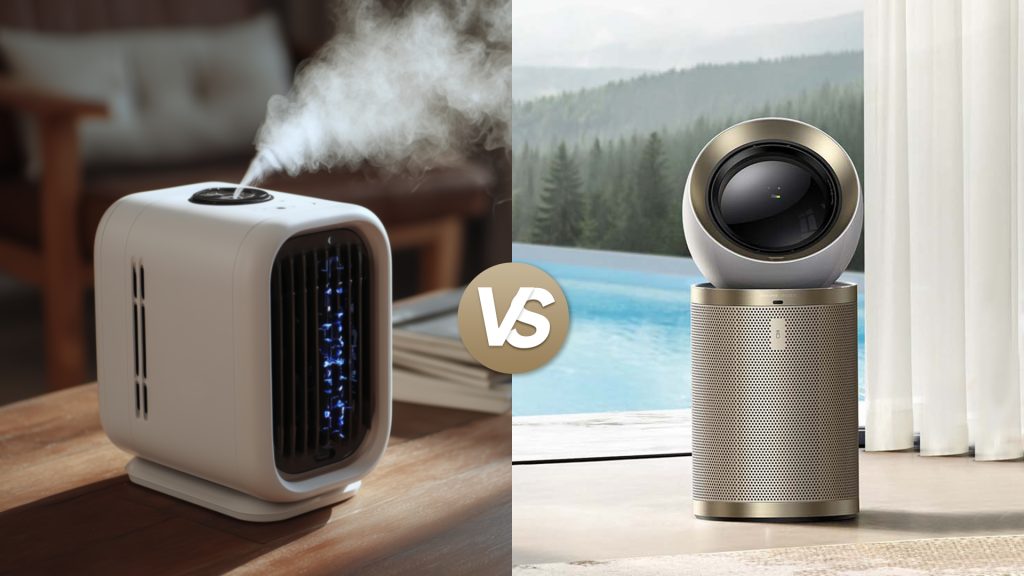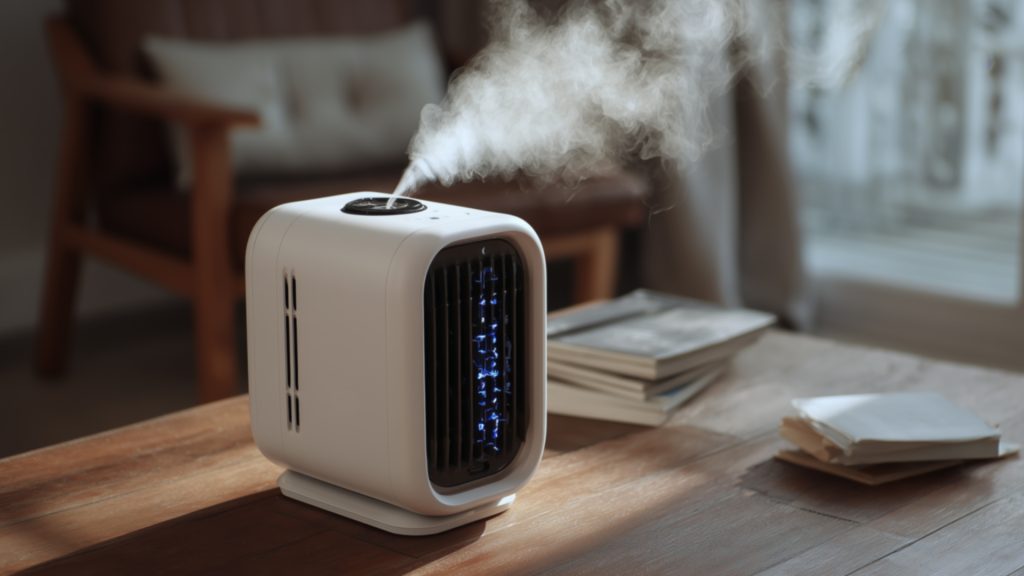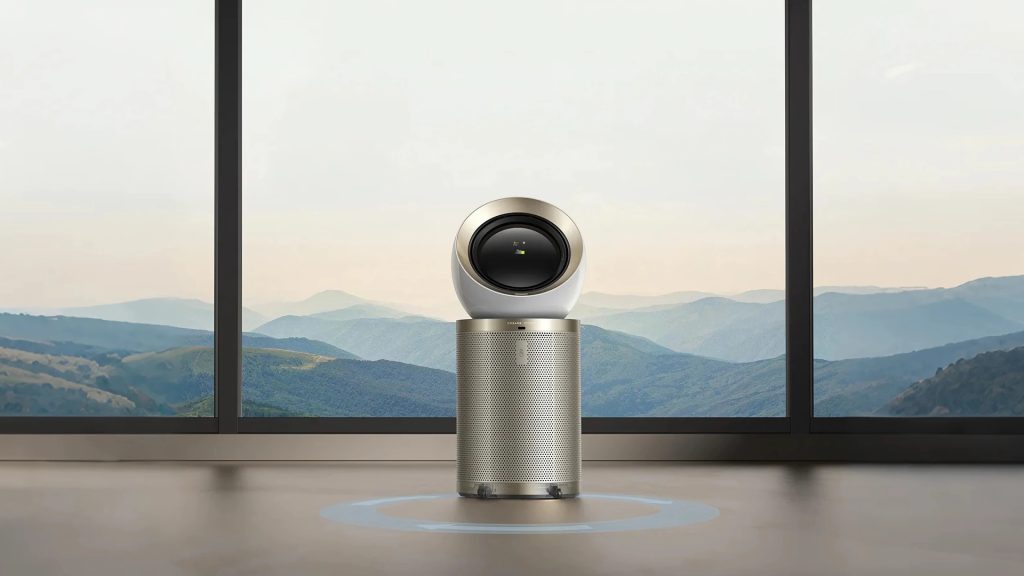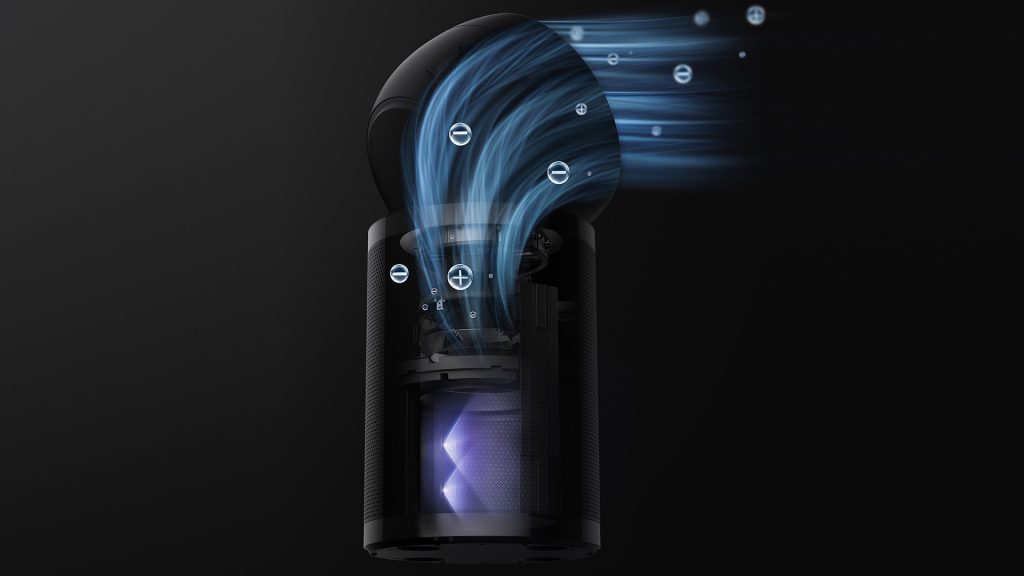
The rise in indoor air pollution is having a significant impact on the health of many people. Allergies and respiratory issues are becoming the new norm among individuals with allergies and certain pet owners. The reason behind this is the presence of allergens, VOCs, bacteria, pollen, pet dander, and other impurities released from cosmetics and cleaning products.
Most people buy appliances like air purifiers or air ionizers to eliminate these pollutants. They both share the same goal but work differently for different units.
Confused about which one you should choose for your home: air ionizer vs. air purifier? Let us compare and understand how these technologies work to purify the indoor pollution.
Table of Content
- What Is an Air Ionizer?
- What Is an Air Purifier?
- Air Ionizer vs. Air Purifier: Key Differences
- What Does an Ionizer Do in an Air Purifier?
- Conclusion: Make the Right Choice for Cleaner Air
What Is an Air Ionizer?
Let us first learn how an air ionizer works to remove pollutants.
Air ionizers introduce electrostatic ions to alter the particles’ structure and cause them to drop out of the airstream. Some unipolar ionizers create only negative ions, while some release both positive and negative ions, known as bipolar ionizers.
These airborne ions get attached to oppositely charged pollutants inhabiting the indoor air, causing them to clump together. Since the cluster now becomes heavier and denser, they fall to the floor or sticks to nearby surfaces, including furnishings, walls, curtains, etc.
Although they clean the air to some extent, they don’t trap the coarse particles. If not cleaned up periodically, the deposited dust can be reintroduced to the air as the clumps break apart after some time. The artificial introduction of ions to the room may also initiate chemical reactions or turn molecules into toxic fumes.

The Benefits of Air Ionizers:
- Works best on small particles, such as dust, pollen, and smoke.
- It can neutralize some odors and pathogens.
- Ionization hinders bacterial growth.
- Often compact and filter-free, reducing maintenance.
The Drawbacks of Air Ionizers:
- Unable to collect pollutants
- Not really effective against larger particles or heavy pollutants.
- May produce harmful by-products such as ozone, a potential lung irritant.
- The particles may still linger in your living space until you remove them.
What Is an Air Purifier?
Unlike ionizers, air purifiers physically trap different-sized pollutants from coarse dust to fine matter in smoke. It uses HEPA and activated carbon filters for enhanced filtration and adsorption. Once the internal fan pulls air from the room, the pollutants are trapped within the filter’s many layers, making them unable to reenter the air.
Mechanical air purifiers use a three-stage filtration system. Firstly, a pre-filter is used to prevent large particles or hair from reaching the main filter. Secondly, activated carbon with a porous charcoal surface traps odors and VOCs. Lastly, the HEPA filter, also known as the main filter, captures the tiniest particles, as small as 0.3 microns.

The Pros of Air Purifiers:
- HEPA filters can remove 99.9% of air pollutants of different sizes (toxic fume, dust, allergens, bacteria)
- Carbon filters trap gases, unwanted odors (such as pet smells), and harmful VOCs from sources like smog, car exhaust fumes, cleaning products, and cosmetics.
- Small to no ozone production in most models.
- Suitable for larger spaces and heavy-duty purification.
The Cons of Air Purifiers:
- Both pre-filters and main filters require regular replacements, increasing maintenance costs.
- Can be noisier or bulkier than ionizers.
- Some devices consume more power.
Needless to say, air purifiers are best suited if you live in a polluted area with large spaces.
What if we told you that some air purifier models also incorporate ion-based technology, like plasma, that elevates the filtration game by neutralizing pollutants? Keep on reading to learn more.
Air Ionizer vs. Air Purifier: Key Differences
This comprehensive table will help the readers to clear their doubts and make informed decisions regarding their air cleaning devices.
| Air Ionizer | Air Purifier |
| Introduces ions to charge airborne pollutants to make them fall or stick | Uses filters (HEPA and activated carbon) to filter and adsorb pollutants |
| Does not physically remove and trap pollutants | Traps the pollutants physically |
| Can remove ultra-fine particles of 0.01 microns (smoke, bacteria, or viruses) | Can remove particles ≥ 0.3 microns (dust, or pollen) |
| Ineffective at removing gases or odours. | Effective for removing large allergens (pollen and dust), VOCs, or gases. |
| Produces ozone as a by-product | Negligible ozone production |
| Usually quieter | Fan noise present |
| Low maintenance cost, budget-friendly | Filters need replacement, high maintenance cost. |
Best For
- Ionizers: Small spaces with less sensitive environments and budget-conscious buyers.
- Purifiers: Ideal for larger rooms with heavy dust, homes with pets, and individuals with sensitive allergies.
What Does an Ionizer Do in an Air Purifier?
You might have heard of air purifiers with built-in ionizers. But what does an ionizer do in an air purifier?
Many advanced air purifiers, such as the Dreame AirPursue PM20, come with ionizers to enhance the efficiency of air purification. This one particularly comes with seven intuitive sensors and four layers for total protection.

Compared to ordinary purifiers, these purifiers with ionizers can remove pollutants through mechanical filtration and simultaneously disinfect bacteria or viruses through the charged action of ions. All HEPA filters, activated carbon media, and electrostatically charged particles work together to stick the finest pollutants to bring them to the filter media, preventing them from getting back into the airflow.
Moreover, the ionization also facilitates the decomposition of harmful gases, such as benzene, with zero by-products.
Conclusion: Make the Right Choice for Cleaner Air
The above guide has shown both pros and cons of mechanical filtration and ionization to help you invest better.
To sum it up, if you are on a budget and live in a small space with less sensitive environments, then air ionizers are generally recommended to control odor and common allergies. However, for homes with pets, heavy dust, or people with allergies, you may opt for air purifiers.
Since neither one can truly purify the air pollutants, you may go for the ionizer-purifier hybrid model. Enjoy the strengths of both in the advanced purifiers with plasma technology like the Dreame AirPursue PM20.
Now is the time to boost the indoor air quality and say goodbye to all the irritants in a breeze!